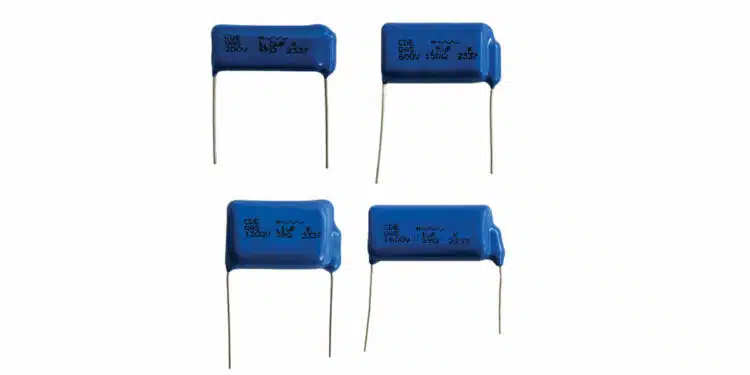Knowles Corporation, (NYSE: KN), a market leader and global provider of advanced micro-acoustic microphones and speakers, audio solutions, and high-performance capacitors and RF products, today announced the QAS Series, a new line of RC-type Arc Suppressor/Snubber components that extend the operating life of electronic and electro-mechanical devices.
These networks can extend the operating life of electronic devices by dramatically reducing or eliminating arcing at the point of electrical contact. QAS series devices are also effective at reducing spark-generated EMI/RFI that can cause noise and interference.
Each device in the QAS series consists of metallized polyester film capacitor RC network, coated with a flame-retardant epoxy. Designing with one single device containing an RC network, rather than building with discrete networks, results in a more compact and robust output.
Electrical arcing can cause any number of issues in a circuit that lead to unreliable operation. Without effective snubbing, arcing is associated with early failures in relays, switch contacts and solid-state components (e.g., SCRs and TRIACs).
Knowles’ Cornell Dubilier brand QAS Series devices provide single-device RC networks in two-lead radial packages. QAS networks extend the operating life of electronic and electro-mechanical devices by reducing and/or eliminating electrical arcing at the point of electrical contact. Without a snubber circuit, arcing often leads to early failures in relays, switch contacts, and solid-state components such as SCRs and TRIACs.
The QAS is also effective at reducing spark-generated EMI/RFI that can cause interference with the operation of a circuit. The QAS product line includes 24 devices with:
Key Series Specifications:
- Capacitance values of up to 1.0uF
- Resistor values up to 680 ohms,
- Rated voltage options up to 1600 Vdc/660 Vac, 60 Hz
- Operating temperature range –55 °C to +85 °C at full rated voltage.
Applications Include:
- Reduce arcing and noise generated and produced in switches, mechanical relays, and Solid Stated Devices
How Arc Suppressor/Snubber Network Devices Work
For direct current (DC) voltage applications, the RC network is usually connected across the relay contacts and for alternating current (AC) voltage applications, the RC network is connected across the load.
When the contacts in an arc suppression circuit open, voltage is applied across the capacitor instead of the relay contacts. No arcing occurs because the capacitor charges in a shorter amount of time than it takes for the contacts to open.
When the contacts close, current from the charged capacitor and the source can exceed the safe conductance of the contacts. At this point, the resistor in the network is responsible for limiting that inrush of current, reducing arcing, and ultimately, extending the service life of the contacts.
Source: Knowles Precision Devices































